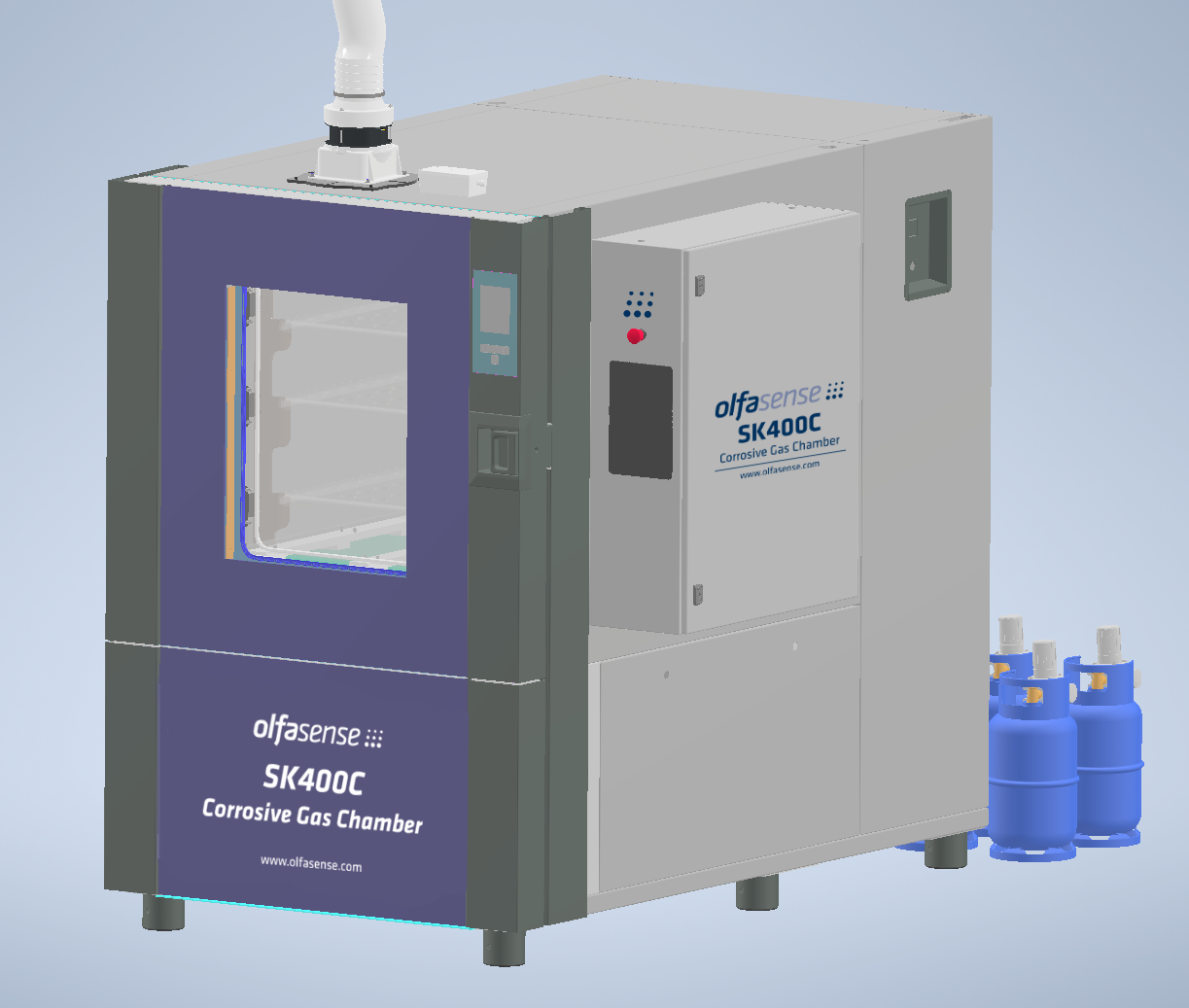Corrosive gas test cabinets
Pollutants in the ambient air, such as sulphur dioxide, hydrogen sulphide or chlorine gas, can cause corrosion damage to various materials in combination with humidity. Special corrosive gas test cabinets are available for testing resistance to air pollutants and for determining the effects of pollutant gas on a wide range of products.
Developed as a joint venture with Olfasense, the new series of corrosive gas devices is characterised by the unique Olfasense corrosive gas device, which enables high-precision corrosive gas testing in accordance with industry-leading test standards.
There are currently 2 device sizes available:
- Corrosive gas test chamber SK 1500C with 1500 litre noxious gas test chamber, based on a CTS basic unit with 2800 litres. useful chamber volume
- Corrosive gas test chamber SK 400 C with 400 litre large pollutant gas test chamber, based on a CTS basic unit with 1000 litres usable volume. usable volume
For more detailed information on the corrosive gas test chambers, please contact our partner Olfasense at www.olfasense.com/odour-measurement-equipment/instruments/corrosive-gas-test-chamber-sk400c
Test space volume in litres:
Possible test gases:
Key facts
- Ideal results thanks to high-precision corrosive gas dosing using a high-quality mass flow controller
- Ideal injection of the corrosive gases in the carrier gas free jet and homogenization by diffuser expansion before entering the test chamber. As a result, even the smallest concentrations in the range of 10 ppb are homogeneously mixed and brought into the test chamber in the specified concentration
- Continuous monitoring of the air exchange rates and gas concentrations by three independent parameters with automatic switch-off when the process parameters are exceeded. These must include the recording and control of the test chamber internal pressure, the carrier air inflow rate, the supply air rate of the corrosive gas dosing and the fan characteristics in relation to the speed
- Regulation of the air exchange rate by means of a flow sensor at the inlet of the corrosive gas test chamber. This ensures correct concentrations in accordance with the corresponding standard when the corrosive gases enter the test chamber, preventing concentrations from increasing above the standard value
- Software specially developed for the application of corrosive gas testing, which guides the user through the individual process steps in a user-friendly manner
- Clear view of the test material thanks to high-quality acrylic glass windows (polymethyl methacrylate) that enable transparent observation
- Compliance with industry-leading test standards such as IEC 60068-2-60, IEC 60068-2-42/43 and others to ensure reliable test results
Performance characteristics
- Possible test gases: hydrogen sulphide (H2S), sulphur dioxide (SO2), chlorine gas (Cl2) with carrier gas N2, nitrogen dioxide (NO2) with carrier gas synthetic air, and others
- Dosing of up to four corrosive gases with 4 corrosive gas dosing lines in the range 1-100 ml/min
- Pressure monitoring as an integrated safety device for reliable operation
- Connection for gas sampling for further analysis
- Testing of the corrosive gas concentration optionally possible with dry air or nitrogen




